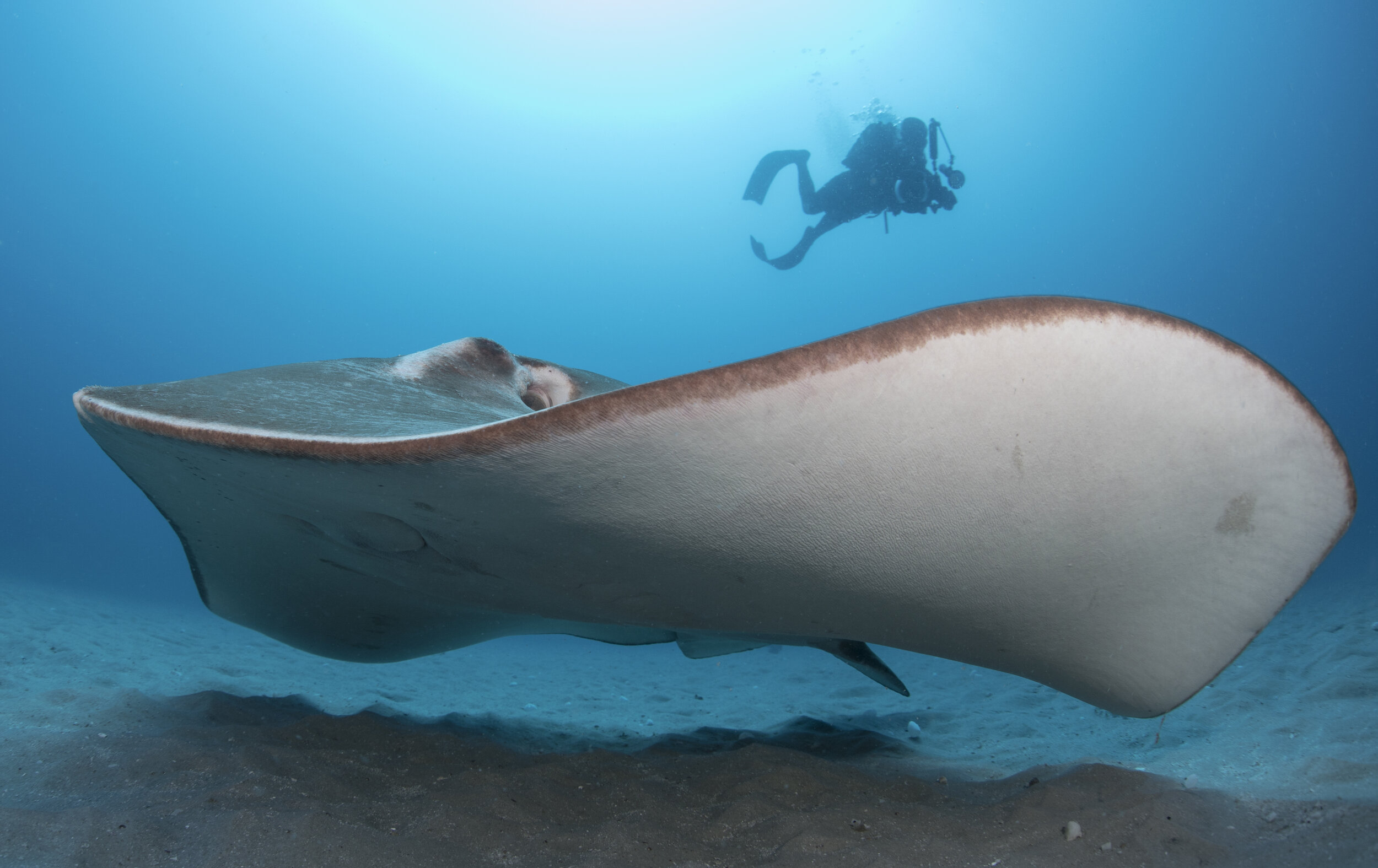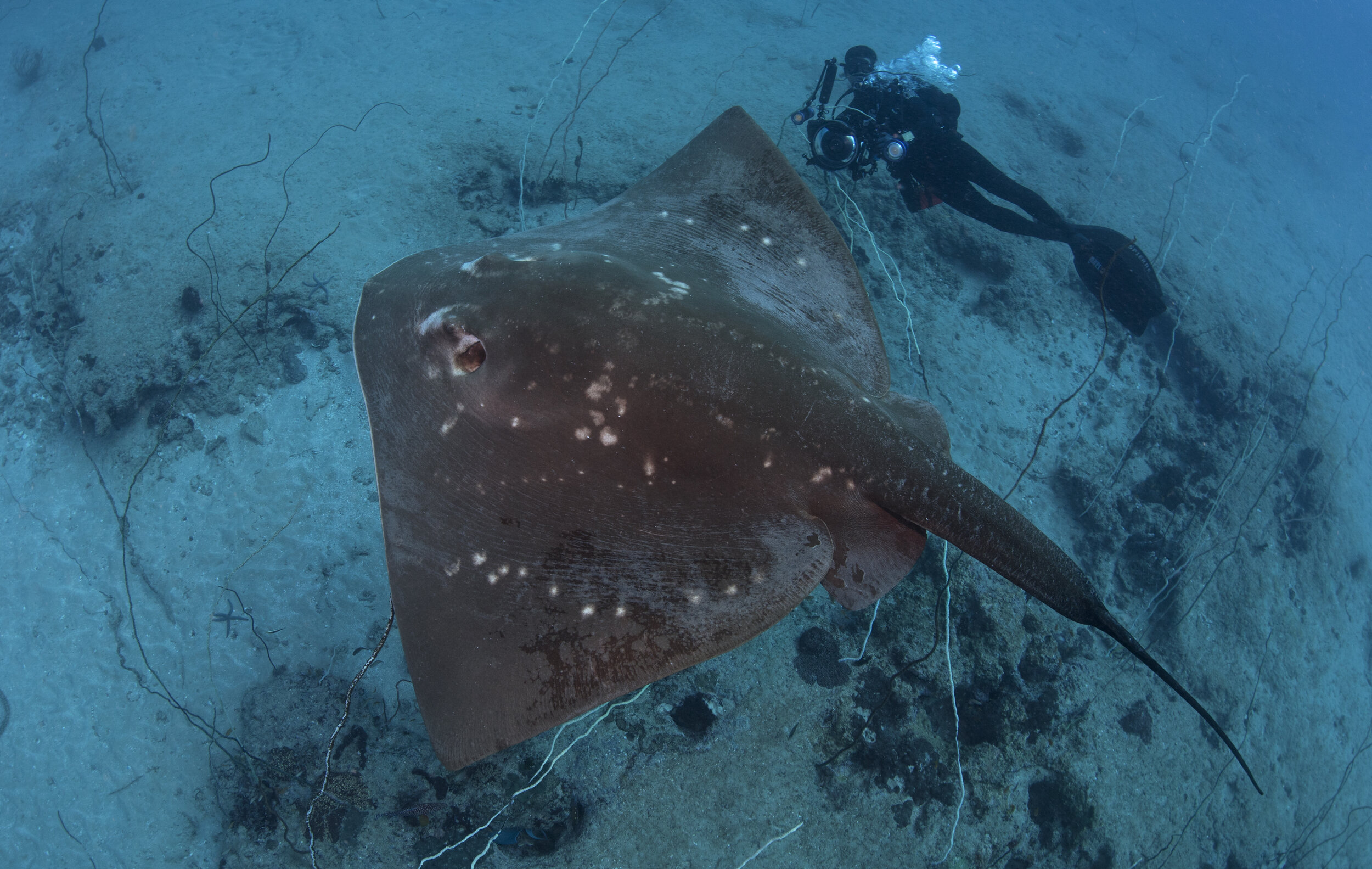
Mozambique Projects.
Smalleye Stingrays
What’s this project about?
In Mozambique we have an extraordinary opportunity to study the rare and enigmatic smalleye stingray. Despite being the largest of the marine stingrays, the species has eluded research efforts to date, leaving it data deficient and vulnerable to exploitation.
This project aims to understand the distribution, movement, and habitat use of smalleye stingrays in the Inhambane Province to determine their population status and conservation needs.
Key successes to date
MMF scientists reported the first record of the smalleye stingray in Africa - a range extension of 5000 km from its closest known location in the Western Indian Ocean.
Through sustained monitoring efforts our team has now identified almost 100 individual rays in southern Mozambique - the largest and most comprehensive database of its kind in the world.
MMF scientists co-authored the current IUCN Red List Assessment for this species.
We have identified over a dozen sites – including throughout the Bazaruto Seascape – with regular sightings of smalleyes in southern Mozambique over the last decade, with our preliminary data showing that these semi-pelagic rays show fidelity to certain reefs.
MMF scientists published the first study examining the longevity of dorsal spot patterning and the feasibility of using photo-identification techniques for long-term monitoring of smalleye stingrays.


Project Overview.
In 2008 MMF researchers made a landmark discovery: a large population of the gigantic and elusive smalleye stingray, Megatrygon microps, living off the coast of Mozambique. The discovery represented a range extension for the species of over 5000 km, and some of the first live sightings of the species. Elsewhere, sightings of this enormous stingray are infrequent, suggesting it remains rare and patchily distributed.
A Mysterious Giant
Despite being the largest known marine stingray, little is known about the biology or ecology of smalleye stingrays. The species is currently listed as ‘Data Deficient” on the IUCN’s Red List of Threatened Species. Regular sightings on inshore reefs in southern Mozambique confirm that this area is not only a critical habitat for the species but is also the best area to study them.
Conservation Needs for Smalleye Stingrays
A marked increase in the use of indiscriminate fishing practices such as gill-netting, long-lining, and seine netting along the Mozambican coast represents a clear threat to smalleye stingrays. The large size of this species, and their curiosity towards people, make them easy targets. To exacerbate the problem, large stingrays typically take years to reach adulthood and have small litters, making them particularly susceptible to overexploitation. Considerable research on this species is needed to address the lack of biological data and these conservation concerns.
Objectives.
Now that we have determined that the natural spot patterning on these stingrays is stable enough to use in long-term individual identification studies we are beginning to estimate the abundance and movements of these rays along the southern Mozambican coast.
The use of advanced telemetry equipment will allow us to study the movements of this large and unusually mobile ray for the first time. In particular, we aim to collect the first information on their home ranges, habitat use, daily movement patterns, depth preferences, and general behavior. The collection of small tissue samples from individual rays will allow us to examine their ecological role in the area.
We will also be monitoring artisanal fisheries to quantify catches of this species along the coast and to identify ‘hotspot’ areas for further investigation.
Project Leaders
Dr Andrea Marshall
Principal Scientist
Andrea has been conducting research on marine megafauna in Mozambique for 20 years, with an emphasis on sharks and rays. As a conservation biologist she focuses predominantly on research questions related to the effective management and conservation of threatened species.
Dr Stephanie Venables
Senior Scientist
Stephanie has been working with MMF since 2014. Her research involves applying different research techniques as conservation tools, using methods such as telemetry (tagging), population genetics, and demographic modeling to better understand species and the way they interact with their environment.
Publications
Atlantine Boggio-Pasqua, Anna Flam, Andrea Marshall (2019) Spotting the ‘small eyes”: using photo-ID methodology to study a wild population of smalleye stingray (Megatrygon microps) in southern Mozambique. Peer J https://peerj.com/articles/7110/
Jen Keeping, Katie Reeve-Arnold, N Burns, Nilza Catarina, D Bailey, D McNeill (2019) Computer-aided photo-identification of a rare stingray, Megatrygon microps. Journal of Fish Biology https://doi.org/10.1111/jfb.14242
Simon Pierce, Will White & Andrea Marshall (2008) New record of the smalleye stingray, Dasyatis microps (Myliobatiformes: Dasyatidae), from the western Indian Ocean. Zootaxa 1734: 65-68.
Media
The ocean's largest, rarest stingray revealed in new video | National Geographic
Long Distance Stingray Migration Revealed| Dive Magazine UK
Brief encounters with the smalleye stingray | Oceanographic Magazine
Recreational divers help researchers track movements of rare stingray | Monga Bay
Press Release







